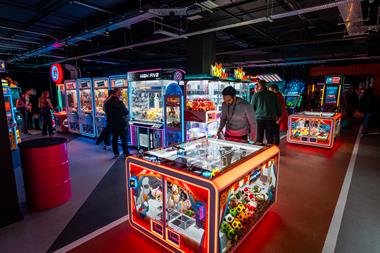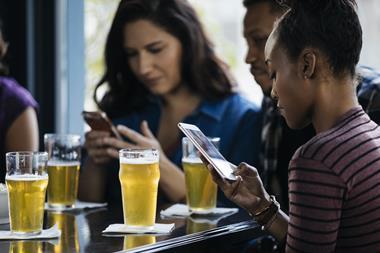Operators are seeing double digit growth in delivery after volumes recovered, Uber Eats UK GM Toussaint Wattinne has told MCA’s The Conversation.
Wattinne said after an initial fall-off when lockdown came into force, volumes quickly ramped back up, with strong growth for those that remained open.
He told the virtual event that the departure of multi-site brands from the delivery platform led to a transferral of consumer spending to the largely independent operators that remained.
Wattinne said the Uber Eats business in the UK was not far from profitability, having rapidly expanded its operations here, with the aim to make the service valuable for all stakeholders, particular restaurant operators.
Speaking on the delivery themed edition, Wattinne said: “It started with a sharp decline in the immediate aftermath of lockdown, as people focused on more essential food, and day to day groceries. But very quickly we saw that ramp back up.
“For operators that were in a position to remain open… they were able to quickly see like for like growth of historic delivery sales.
“Of course, this did not always make up for missed in-store sales, but they were seeing a double digit increase in sales.”
He said the tech company had prioritised making delivery as safe as possible, with hand sanitisers, masks, social distancing and contactless delivery.
For restaurants, it has helped with menu optimisation, pricing, daily and weekly payments, management of cashflow and guidance on latest safety initiatives.
On whether volumes would hold up after lockdown, Wattinne said: “My sense is delivery by now has more than recovered from where it was before covid, and become a meaningful relief to drive cash and sales to restaurants.
“In the European markets where we operate, where lockdown has been eased, delivery sales have remained, which suggests the behaviours are here to stay.”
Wattinne also addressed the issue of commission, amid complaints rates are too high to make delivery profitable for operators.
He added: “Our priority is to ensure that delivery is valuable for all stakeholders, particularly restaurants, so they can leverage delivery to thrive.
“The initial standpoint for the vast majority with delivery has been that it’s an additional complimentary revenue stream, and that the economies, despite commission, have been able to work in light of variable costs structures.
“As volumes increase, there are more questions about how to make it a more valuable model, and capture as much opportunity as possible as delivery continues to grow.
“Lot of operators are adapting the operations, with delivery specific menus, smaller units, delivery kitchens, and ensuring that operations are optimised and efficient as can be, so they don’t miss out on the opportunities.”
“Today we are continuing to invest in light of rapid growth. Having said that, we have a sustainable model, and a number of markets which are profitable. There is a sustainable path within this, and this path is not very far.”
Precis
Uber Eats UK GM Toussaint Wattinne: Double digit growth during lockdown
Operators are seeing double digit growth in delivery after volumes recovered, Uber Eats UK GM Toussaint Wattinne has told MCA’s The Conversation. Wattinne said after an initial drop-off when lockdown came into force, volumes quickly ramped back up, with strong growth for those that remained open. He told the virtual event that the departure of multi-site brands from the delivery platform led to a transferral of consumer spending to the largely independent operators that remained. Wattinne said the Uber Eats UK business was not far from profitability, having invested in rapidly expanded its operations here, with the aim to make the service valuable for all stakeholders, particular restaurant operators.































![Burger King Swindon_20_web[52]](https://d36hgjhwuw81py.cloudfront.net/Pictures/380x253/8/0/6/379806_burgerkingswindon_20_web52_81140.jpg)



![RC-561[1]](https://d36hgjhwuw81py.cloudfront.net/Pictures/380x253/5/6/3/378563_rc5611_987001.jpg)







